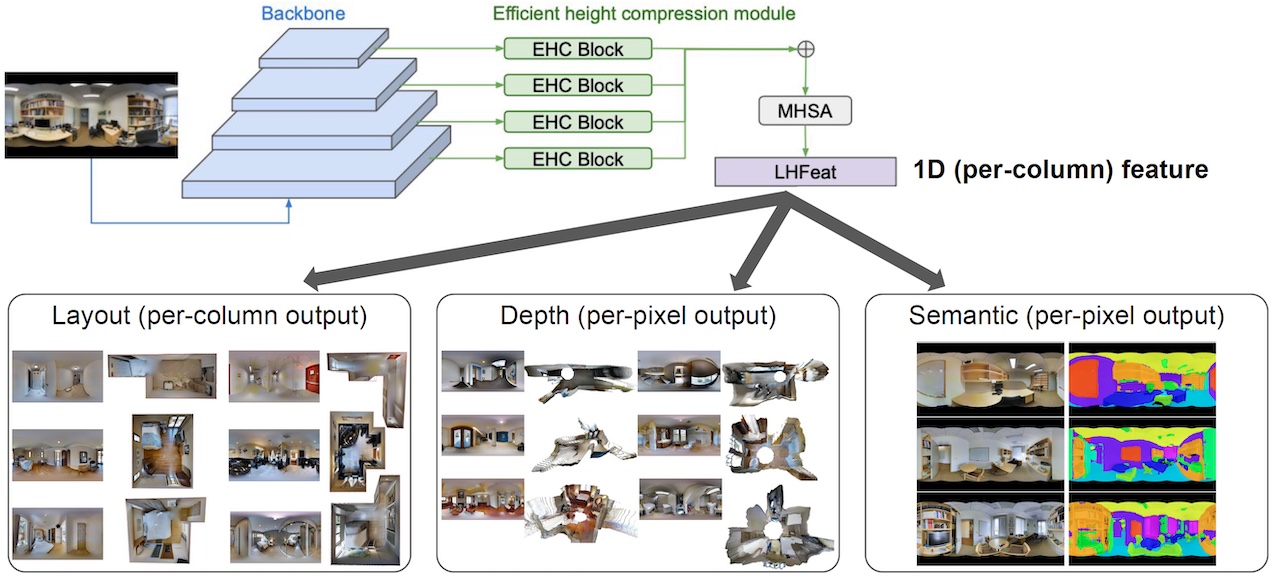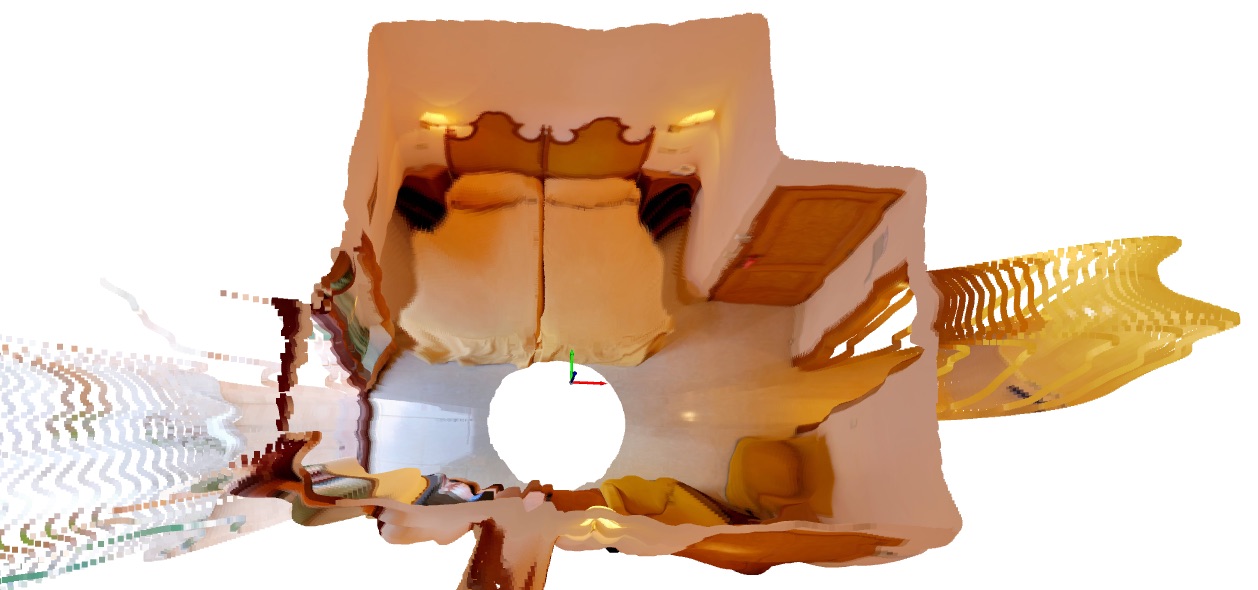This is the implementation of our CVPR'21 "HoHoNet: 360 Indoor Holistic Understanding with Latent Horizontal Features ".
- April 3, 2021: Release inference code, jupyter notebook and visualization tools. Guide for reproduction is also finished.
- March 4, 2021: A new backbone HarDNet is included, which shows better speed and depth accuracy.
Links to trained weights ckpt/: download on Google drive or download on Dropbox.
In below, we use an out-of-training-distribution 360 image from PanoContext as an example.
See infer_depth.ipynb, infer_layout.ipynb, and infer_sem.ipynb for interactive demo and visualization.
Run infer_depth.py/infer_layout.py to inference depth/layout.
Use --cfg and --pth to specify the path to config file and pretrained weight.
Specify input path with --inp. Glob pattern for a batch of files is avaiable.
The results are stored into --out directory with the same filename with extention set ot .depth.png and .layout.txt.
Example for depth:
python infer_depth.py --cfg config/mp3d_depth/HOHO_depth_dct_efficienthc_TransEn1_hardnet.yaml --pth ckpt/mp3d_depth_HOHO_depth_dct_efficienthc_TransEn1_hardnet/ep60.pth --out assets/ --inp assets/pano_asmasuxybohhcj.png
Example for layout:
python infer_layout.py --cfg config/mp3d_layout/HOHO_layout_aug_efficienthc_Transen1_resnet34.yaml --pth ckpt/mp3d_layout_HOHO_layout_aug_efficienthc_Transen1_resnet34/ep300.pth --out assets/ --inp assets/pano_asmasuxybohhcj.png
To visualize layout as 3D mesh, run:
python vis_layout.py --img assets/pano_asmasuxybohhcj.png --layout assets/pano_asmasuxybohhcj.layout.txt
Rendering options: --show_ceiling, --ignore_floor, --ignore_wall, --ignore_wireframe are available.
Set --out to export the mesh to ply file.
Set --no_vis to disable the visualization.
To visualize depth as point cloud, run:
python vis_depth.py --img assets/pano_asmasuxybohhcj.png --depth assets/pano_asmasuxybohhcj.depth.png
Rendering options: --crop_ratio, --crop_z_above.
Please see README_reproduction.md for the guide to:
- prepare the datasets for each task in our paper
- reproduce the training for each task
- reproduce the numerical results in our paper with the provided pretrained weights
Released after CVPR 2021.


